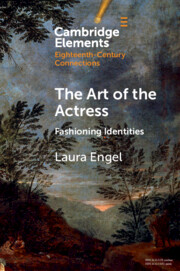22 results
Images of international thinkers
-
- Journal:
- Review of International Studies , First View
- Published online by Cambridge University Press:
- 09 May 2024, pp. 1-20
-
- Article
-
- You have access
- Open access
- HTML
- Export citation
Chapter 19 - Photography
- from Part V - Life, Illness, and the Arts
-
-
- Book:
- Robert Lowell In Context
- Published online:
- 28 March 2024
- Print publication:
- 04 April 2024, pp 206-215
-
- Chapter
- Export citation

The Art of the Actress
- Fashioning Identities
-
- Published online:
- 10 January 2024
- Print publication:
- 08 February 2024
-
- Element
- Export citation
3 - Printed Images and the Visual Culture of the News
-
- Book:
- War, Communication, and the Politics of Culture in Early Modern Venice
- Published online:
- 15 January 2023
- Print publication:
- 05 January 2023, pp 105-155
-
- Chapter
- Export citation
Chapter 39 - Tolstoy as the Subject of Art: Painting, Film, Theater
- from Part VI - Tolstoy’s Afterlife
-
-
- Book:
- Tolstoy in Context
- Published online:
- 05 January 2023
- Print publication:
- 22 December 2022, pp 323-335
-
- Chapter
- Export citation
Chapter 16 - Representing Johnson in Life and After
-
-
- Book:
- The New Cambridge Companion to Samuel Johnson
- Published online:
- 22 September 2022
- Print publication:
- 29 September 2022, pp 218-238
-
- Chapter
- Export citation
Chapter 3 - Appearance
-
- Book:
- Seneca's Characters
- Published online:
- 23 June 2022
- Print publication:
- 07 July 2022, pp 181-262
-
- Chapter
-
- You have access
- Open access
- HTML
- Export citation
Chapter 13 - Conspirators and Others
- from Part Four - Ordinary Britons
-
- Book:
- Conspiracy on Cato Street
- Published online:
- 06 April 2022
- Print publication:
- 12 May 2022, pp 285-304
-
- Chapter
- Export citation
Chapter 8 - A Terrorist in the Making: 1774–1816
- from Part Three - Thistlewood: His Story
-
- Book:
- Conspiracy on Cato Street
- Published online:
- 06 April 2022
- Print publication:
- 12 May 2022, pp 167-185
-
- Chapter
- Export citation
Chapter 6 - The Visual Representation of Ptolemaic and Seleucid Kings
- from Part II - Communication and Exchange
-
-
- Book:
- Comparing the Ptolemaic and Seleucid Empires
- Published online:
- 17 September 2021
- Print publication:
- 30 September 2021, pp 164-190
-
- Chapter
- Export citation
Maiestas Serena: Roman Court Cameos and Early Imperial Poetry and Panegyric
-
- Journal:
- The Journal of Roman Studies / Volume 111 / November 2021
- Published online by Cambridge University Press:
- 14 July 2021, pp. 75-152
- Print publication:
- November 2021
-
- Article
- Export citation
4 - Marie d’Agoult
-
- Book:
- Writers and Revolution
- Published online:
- 11 March 2021
- Print publication:
- 01 April 2021, pp 123-166
-
- Chapter
- Export citation
Chapter 8 - Jonson in the Shadows
- from Part III - Jonsonian Afterlives
-
-
- Book:
- Ben Jonson and Posterity
- Published online:
- 24 September 2020
- Print publication:
- 08 October 2020, pp 167-192
-
- Chapter
- Export citation
3 - The General Prologue
-
-
- Book:
- The Cambridge Companion to The Canterbury Tales
- Published online:
- 21 August 2020
- Print publication:
- 10 September 2020, pp 45-58
-
- Chapter
- Export citation
Chapter 2 - Photographing the Past in the Theatre of Charles Kean
- from Part I - Photographing Performers
-
- Book:
- Still Shakespeare and the Photography of Performance
- Published online:
- 05 December 2019
- Print publication:
- 19 December 2019, pp 67-101
-
- Chapter
- Export citation
Chapter 3 - Julia Margaret Cameron, Sympathetic Shakespeare, and Photographic Afterlives
- from Part I - Photographing Performers
-
- Book:
- Still Shakespeare and the Photography of Performance
- Published online:
- 05 December 2019
- Print publication:
- 19 December 2019, pp 102-146
-
- Chapter
- Export citation
3 - Artists and Subjects
- from Part I - Emancipation of the Arts (1850–1889)
-
- Book:
- The Firebird and the Fox
- Published online:
- 05 October 2019
- Print publication:
- 24 October 2019, pp 50-65
-
- Chapter
- Export citation
Chapter 7 - The Transcendent Image
-
- Book:
- What is 'Islamic' Art?
- Published online:
- 27 September 2019
- Print publication:
- 10 October 2019, pp 184-222
-
- Chapter
- Export citation
Compilation and digitisation of the Palmyrene corpus of funerary portraits
-
- Article
-
- You have access
- HTML
- Export citation
Part XXVII - Shakespeare and the Visual Arts
-
-
- Book:
- The Cambridge Guide to the Worlds of Shakespeare
- Published online:
- 17 August 2019
- Print publication:
- 21 January 2016, pp 1861-1906
-
- Chapter
- Export citation



